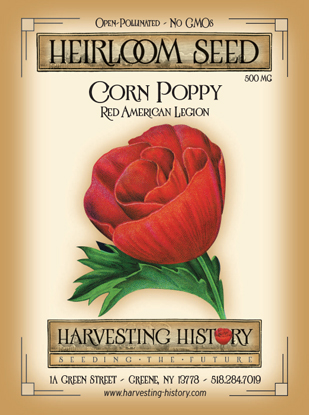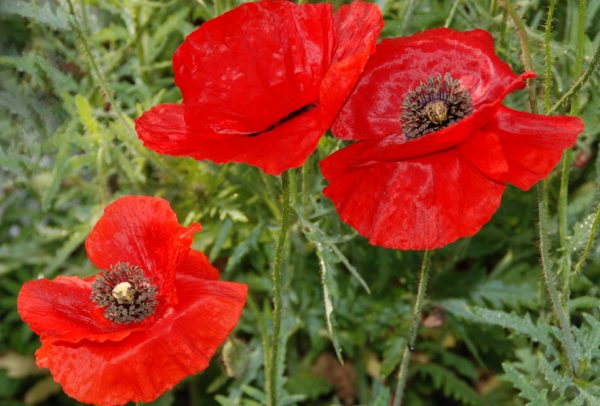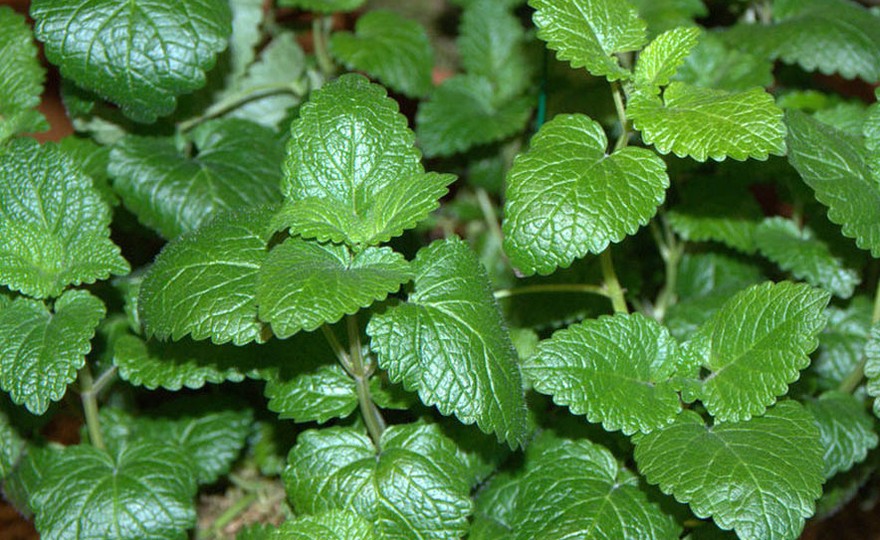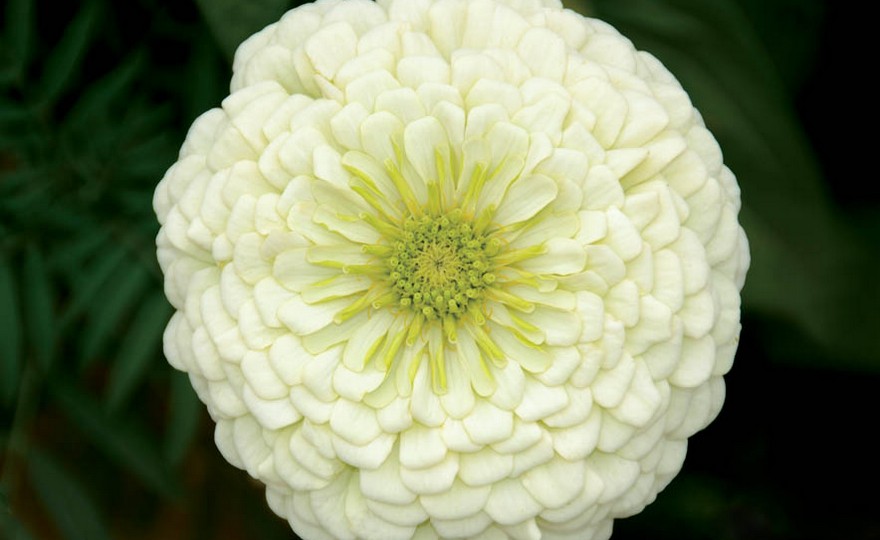
Poppy, Red American Legion
-
- **SOLD OUT** HOLIDAY GIFTS **SOLD OUT**
- **SOLD OUT** Holiday Books **SOLD OUT**
- **SOLD OUT** Holiday Citrus **SOLD OUT**
- **SOLD OUT** Holiday Gift Certificates **SOLD OUT**
- **SOLD OUT** Holiday Paperwhites **SOLD OUT**
- **SOLD OUT** Holiday Praying Mantis Kits **SOLD OUT**
- **SOLD OUT** Holiday Tools **SOLD OUT**
- **SOLD OUT** Holiday Wildflower Mixtures **SOLD OUT**
- Citrus Trees
- **SOLD OUT** - Vegetable and Herb Plants - Mix & Match any 6 Plants for $50 - Only Shipped in Quantities of 6
- Elephant Ear Plants & Roots
- **SOLD OUT** 4-Inch Pot Herb Plants **SOLD OUT**
- Rare Plants
- **SOLD OUT** Vining Plants **SOLD OUT**
- Asian Seeds
- Beneficial Bugs
- Books
- Citrus Fertilizers
- Cold-Treated Bulbs - SEE BULBS FOR FALL PLANTING TO ORDER
- Cold-Treated Allium
- Cold-Treated Chionodoxa
- Cold-Treated Crocus
- Cold-Treated Hyacinthoides
- Cold-Treated Hyacinthus Orientalis
- Cold-Treated Narcissus
- Cold-Treated Cyclamineus Narcissus
- Cold-Treated Double Heirloom Narcissus
- Cold-Treated Jonquilla Narcissus
- Cold-Treated Large Cupped Narcissus
- Cold-Treated Poeticus Narcissus
- Cold-Treated Small Cupped Narcissus
- Cold-Treated Species Miniature Narcissus
- Cold-Treated Split Cupped Narcissus
- Cold-Treated Tazetta Narcissus
- Cold-Treated Triandus Narcissus
- Cold-Treated Trumpet Daffodils
- Cold-Treated Ornithogalum
- Cold-Treated Rock Garden Iris
- Cold-Treated Scilla
- Cold-Treated Tulips
- Cold-Treated Emperor Tulips
- Cold-Treated Fringed Tulips
- Cold-Treated Green or Viridiflora Tulips
- Cold-Treated Lily Flowering Tulips
- Cold-Treated Parrot Tulips
- Cold-Treated Peony Flowering Tulips
- Cold-Treated Single Early Tulips
- Cold-Treated Single Late Tulips
- Cold-Treated Species Tulips
- Cold-Treated Triumph Tulips
- Flower Bulbs, Corms and Tubers
- Bulbs for Spring Planting
- Bulbs for Fall Planting - ALL BULBS AVAILABLE ARE COLD TREATED FOR PLANTING AS SOON AS SOIL CAN BE WORKED
- Fall Blooming Bulbs
- Garden Tools & Equipment
- Gift Certificates
- HHH Exclusive Wildflower Mixtures
- Wildflower Mixtures
- Heirloom Garlic
- Potatoes
- Roots & Sets
- Seeds
- Flowers
- Herbs
- Vegetables
- **SOLD OUT** HOLIDAY GIFTS **SOLD OUT**
-
- No products to compare
-
73 in stock
Quick Overview
Poppy, Red American Legion
Poppy seed is some of the most extraordinary seed known to mankind. Seeds can be stored or buried for sometimes hundreds of years and yet will germinate when the soil is turned or the seeds are exposed to light. The annual varieties require full sun, but the perennial varieties prefer partial shade to full sun. Poppies do not like to be transplanted so sow the seed where the plants are intended to grow. Seed sown in the late fall, generally, does better than seed sown in the early spring. Cover the seed with a light dusting of soil – no more than 1/8 of an inch. Thin seedlings to 10-12 inches. The plants bloom in June and early July.
| Type | Spacing | Planting Depth | Days to Germination | Blossoms |
| Annual | 6-8 in. | 1/8 in. | 14-21 | 30-45 |

Poppy, Red American Legion
Poppies are native to the temperate regions of the world and have been known and cultivated for thousands of years, primarily for medicinal purposes. There are more than 50 species of annual and perennial poppies native to Europe and at least 100 varieties that are indigenous to other areas of the Northern Hemisphere and California, in particular. The Romans are believed to have introduced the poppy into Great Britain. The Latin name, Papaver, comes from the word, Pappa which means milky juice. The plants have a long history in the mythology and legend of most Western cultures. They were recognized as symbols of fertility (a single seed pod can contain as many as 32,000 seeds), fecundity and also death – used as a token of remembrance. In 1794, the Opium Poppy was grown for the first time in Great Britain for commercial purposes. Prior to this the same poppy had been a popular cottage garden flower grown exclusively for its floral beauty. The narcotic properties of the Opium Poppy have greatly overshadowed the value of this plant. Humorously, it is legal to sell opium poppy seeds in the United States, but it is illegal to grow them. The California Poppy, Eschsholtzia californica, is a salt tolerant, annual, native of California. In the 19th century the plant was known, scientifically, as Chriseis Californica. The California Poppy was beloved by Native Americans and the early settlers. It was first described in 1792 as an annual having flowers of yellow, orange and white. Later, rose, carmine and scarlet varieties were discovered. One of the original names for California was the Land of Fire because the brilliant colors of the California Poppies blooming on the hillsides. Joseph Breck in his 1851 book, The Flower Garden, stated, “Chriseis Californica. – Formerly Eschsholtzia. – Grows two feet high; blooms from June to September. Flowers brilliant shining yellow. Scarcely any plant produces a greater degree of splendor than this; when the full sun is upon it, it makes a complete blaze of color. It is a most suitable plant for producing a distant effect…” The California Poppy does not like to be transplanted so sow seeds in either the fall or spring where the flowers are to be grown. Seeds sometimes perform better whe sown in the fall. The Iceland Poppy, Papaver nudicaule, a perennial, is believed to have originated in Siberia. Early forms of the plant grown in the late 18th and early 19th century produced yellow blooms – with one exception, a rare scarlet form. Horticulturalists in the late 19th century were able to produce a variety of colors, the most popular being a salmon pink. Breck describes the plant as “… two or three varieties with yellow, and one with scarlet flowers, from Siberia, one foot to one and a half high.” The Oriental Poppy, Papaver orientale, a perennial, was sometimes known as the Eastern Poppy and originated in Eastern Europe near the borders of Persia and Afghanistan. It was introduced into Britain in the early 18th century. Breck describes the plant as, “…a most magnificent perennial, worth all the rest of the Poppy tribe. Its large, gorgeous, orange scarlet flowers, display themselves in the month of June. The bottoms of the petals are black; the stigma is surrounded by a multitude of rich purple stamens, the antlers of which shed a profusion of pollen…A clump, with twenty or thirty of these flowers, makes one of the most conspicuous and showy ornaments of the garden…” The Red American Legion Poppy, Papaver rhoeas, is an annual also known as the Corn Poppy. It is an ancient species that is native to Europe, Africa and Asia. One of the ancient myths associated with this poppy tells of Somnus, the Roman God of Slumber, who created poppies to force Ceres the Goddess of the Harvest, in charge of the corn crop, to slip into a sleep when she had grown too filled with worries to sleep. When she awoke, she was refreshed and the corn crop had revived. Her crown was forevermore interwoven with corn and poppies. The term, rhoeas, means to flow or fall, and refers to the quickly perishable nature of the blossoms. Breck described it as, “… a common weed among grain on gravelly soils in England…It is frequently known by the name African Rose. The odor of the flower renders it unpopular; nothing can exceed the beauty and delicacy of the flower.” During World War I, when the fields of Flanders were bombed, sunlight reached poppy seeds in the disturbed soil and soon the fields were covered with red blossoms, a welcome sight for the emancipating American troops. Because of this, the American Legion adopted the red poppy as its symbol to be worn every Memorial Day. The Shirley Poppies, single and double, are also Papaver rhoeas. These poppies were developed by the Reverend William Wilkes of Shirley in Surrey, England. During the summer of 1880, Rev. Wilkes spied one flower in a stand of Corn Poppies which differed from all the others because the margins of the petals were lined with white. He saved the seed, and for a number of years bred poppies from these seeds selecting only the seedlings which showed the variation. Eventually he stabilized the variation and developed single and double varieties.







